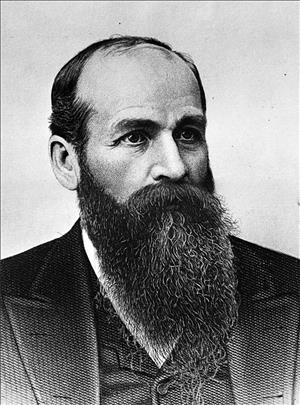On July 9, 1877, voters re-elect Gideon A. Weed as mayor of the City of Seattle.
Pursuant to the charter approved by the legislature, the mayor's term of office was one year. Elections were held on the second Monday of July.
Weed, who did not declare a party affiliation, served his first term as mayor in 1876. A medical doctor, he was named acting health officer during his second term, partly in response to a smallpox epidemic that had developed the previous year.
Weed was credited with easing the financial impact of the epidemic on the city's limited resources by paying for the care of some indigent patients with his own funds. There were a total of 18 cases of smallpox in the city in a 12-month period ending July 30, 1877; eight patients died. Weed cited the epidemic in urging the Territorial Legislature to amend Seattle's charter and create a permanent position for a health officer. The change took place early in 1878. Weed was elected health officer again in 1884.
Weed and his wife settled in Seattle in 1870. Both had been practitioners of an alternative medicine known as hydropathy ("the water cure") in Salem, Oregon, in the 1850s. Hydropathy involved the internal and external use of water in an attempt to cure disease. Weed later received training in conventional medicine in California.
As one of only about 10 physicians in Seattle in the 1870s, Weed quickly established a successful practice. He also made a number of "fortunate investments" in Seattle real estate. By mid-decade, he had both a "considerable fortune" and "a prominent place among the business men and municipal activities of the little city" (Bagley, vol. 1, p 321-322). His prosperity was reflected in the elaborate home he and his wife built on the northeast corner of 2nd Avenue and Madison Street.
Weed was a charter member and first president of the King County Medical Society when that group was organized in 1888. He was also active in the Washington Territory Medical Society, serving as president in 1879, as treasurer from 1881 to 1884, and as vice president in 1890.

